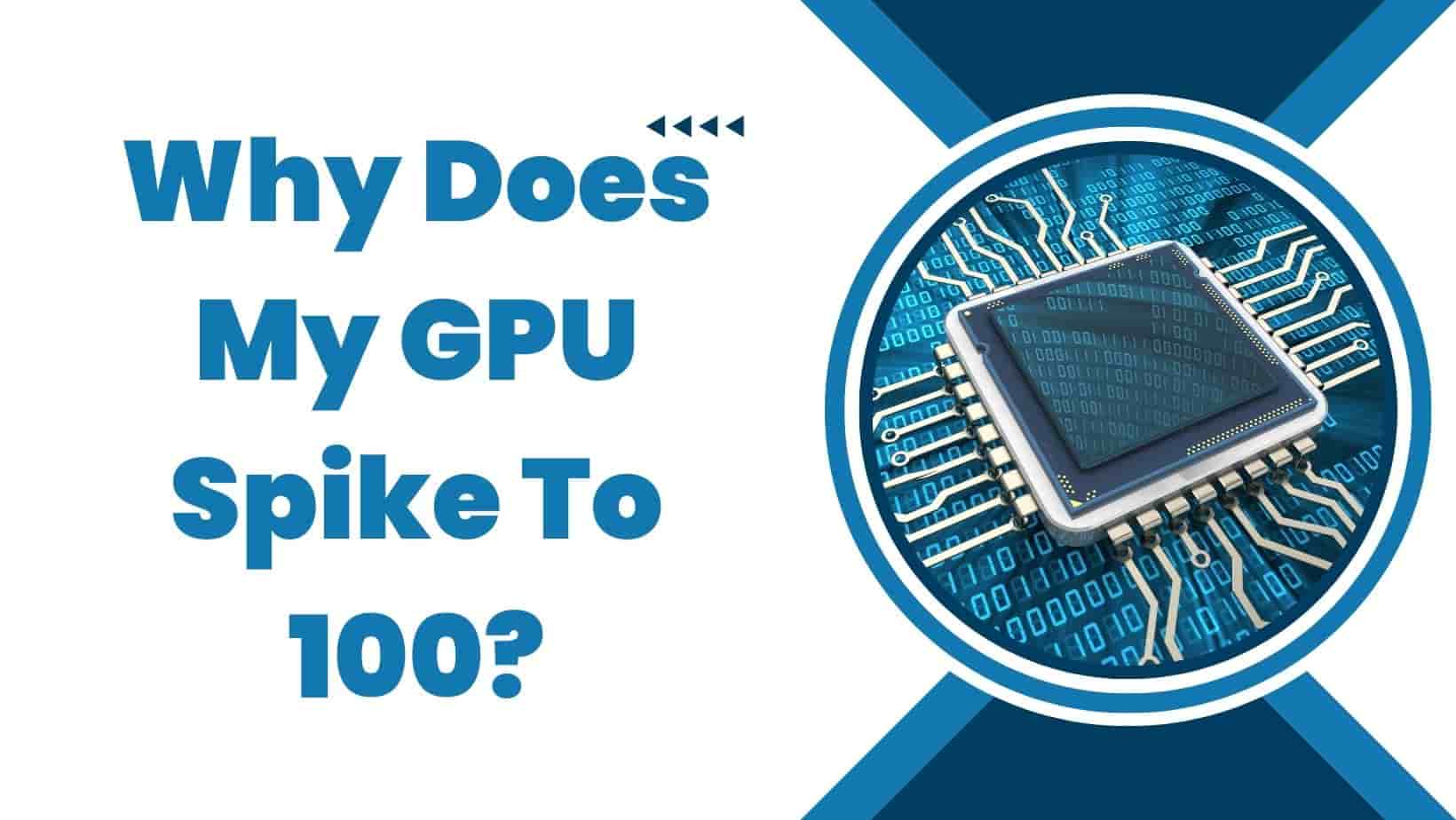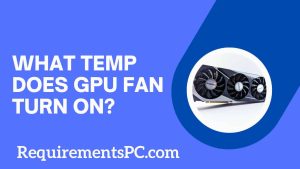In recent years, the use of graphics processing units (GPUs) has become increasingly prevalent in the world of computing. These powerful processors are essential for tasks such as gaming, video editing, and 3D graphics rendering. However, many users have experienced a frustrating issue where their GPU spikes to 100% usage, causing slowdowns, crashes, and other performance issues. This phenomenon can be concerning for both novice and experienced users, as it can be difficult to pinpoint the root cause.
In this guide, we will explore the reasons behind why GPUs spike to 100% and how they can impact overall system performance. We will also discuss potential solutions and tips for preventing these spikes in the first place.
With a better understanding of this issue, you can take proactive measures to optimize your GPU usage and ensure a smooth and efficient computing experience.
Why Does My GPU Spike To 100?
When it comes to experiencing sudden spikes in GPU usage, there can be a multitude of factors at play. One common reason for this issue could be related to resource-intensive tasks or applications running in the background. These tasks can put a significant strain on your GPU, resulting in a sudden spike in usage.
Additionally, outdated or incompatible graphics drivers can also contribute to erratic GPU behavior. It’s essential to update your drivers regularly to ensure optimal performance and compatibility.
Another factor to consider is inadequate cooling or improper ventilation within your system. Overheating can cause the GPU to work harder and reach higher usage levels in an attempt to cope with the increased temperature. Conducting regular maintenance and ensuring proper airflow can prevent overheating-related spikes in GPU usage.
Impact of Outdated Drivers
As we discussed above, outdated drivers can have a significant impact on the performance and stability of your GPU. When your graphics drivers are not up to date, they may not be fully optimized to work with the latest software and applications, leading to compatibility issues and decreased performance. This can result in frequent crashes, screen freezes, and even system instability.
Moreover, outdated drivers may need more important bug fixes and security patches, leaving your system more vulnerable to potential threats. Regularly updating your drivers ensures that your GPU is able to deliver optimal performance, smooth graphics, and a reliable computing experience.
Importance of Proper Cooling
Proper cooling is of paramount importance when it comes to maintaining the performance and longevity of your GPU. When a graphics card operates under high temperatures, it can lead to a range of issues that can severely impact its performance and overall system stability.
Excessive heat can cause components to throttle, resulting in decreased clock speeds and diminished graphics performance.
Moreover, prolonged exposure to high temperatures can lead to accelerated wear and tear on the GPU, potentially shortening its lifespan.
By ensuring adequate cooling through proper airflow, fans, and heat sinks, you can prevent these temperature-related problems and maintain optimal performance levels for your GPU, ultimately enhancing your gaming or computing experience.
Role of High-Demand Applications
High-demand applications play a crucial role in pushing the limits of our GPUs and testing their capabilities. These applications, such as graphics-intensive games, video editing software, and 3D modeling programs, require substantial processing power and rely heavily on the GPU’s performance.
When running these applications, the GPU is tasked with rendering complex visuals, handling real-time physics calculations, and delivering smooth, immersive experiences.
As a result, it’s not uncommon for the GPU to spike to 100% utilization as it strives to meet the demands of these resource-intensive tasks.
Understanding the role of high-demand applications can help us appreciate the need for powerful GPUs and highlight the importance of optimizing our systems to ensure smooth performance and an enjoyable user experience.
Tips for Troubleshooting And Prevention
To maintain optimal performance and prevent frequent GPU spikes to 100%, it is essential to implement effective troubleshooting and prevention strategies.
Firstly, monitor your GPU temperature to prevent overheating, which can cause sudden spikes in utilization. Ensure that your computer’s cooling system is clean and functioning properly, and consider using software solutions to monitor and control GPU temperature.
Secondly, be mindful of running too many resource-intensive applications simultaneously, as this can overload the GPU and lead to increased utilization. Prioritize closing unnecessary programs and processes when using high-demand applications that heavily rely on the GPU.
Lastly, regularly clean your computer’s internals, including dusting the GPU and ensuring proper ventilation, as a clean system promotes efficient performance and reduces the likelihood of GPU spikes. By following these troubleshooting and prevention tips, you can help maintain a stable and optimized GPU performance.
Final Words
In conclusion, a GPU spiking to 100% can be a cause for concern, but it is not always a sign of a major issue. It is important to monitor your GPU’s performance and take note of any unusual spikes. If the spikes continue or you notice other performance issues, it may be worth to follow above troubleshooting steps.
Additionally, keeping your drivers and software up to date and making sure your system is properly ventilated can help prevent future spikes. With proper maintenance and monitoring, you can ensure that your GPU continues to function at its best.
FAQ
What are some common reasons why a GPU may spike to 100% usage?
A GPU’s usage may spike to 100% due to resource-demanding tasks like gaming, video editing, or rendering. Background processes, driver issues, malware, or inefficient cooling can also cause spikes. Overclocking, outdated hardware, or an insufficient power supply may also lead to increased GPU usage.
How can I monitor and track my GPU usage to identify when it spikes to 100%?
You can monitor and track your GPU usage by using software tools like MSI Afterburner, GPU-Z, or Task Manager in Windows. These tools provide real-time information on GPU usage, temperature, and other metrics.
You can set up alerts or notifications to identify when the GPU usage spikes to 100%, which can help you pinpoint any performance issues or bottlenecks.
Regularly checking these metrics can also assist you in optimizing your system settings and performance for better efficiency and stability.
Are there specific tasks or applications that commonly cause a GPU to spike to 100%?
Yes, tasks such as gaming, video editing, 3D rendering, and machine learning applications often cause a GPU to spike to 100% usage due to the high demand for graphics processing power required by these intensive tasks.
Other factors like inefficient coding, high resolutions, and complex visual effects can also contribute to the GPU being pushed to its maximum capacity.
What are the potential consequences of a GPU consistently spiking to 100% usage?
Consistently spiking a GPU to 100% usage can lead to overheating, decreased lifespan of the GPU, potential hardware failures, system instability, reduced performance in other applications, and increased power consumption.
It can also cause excessive wear and tear on the GPU components, impacting overall system reliability and efficiency. Regularly running a GPU at maximum capacity can also affect the user experience, causing lag, freezing, or crashes during intensive tasks.
How can I troubleshoot and address the issue of my GPU spiking to 100% to prevent damage or performance issues?
To troubleshoot and address GPU spiking to 100%:
- Start by checking for overheating or dust accumulation.
- Ensure proper ventilation and cooling systems are in place.
- Update GPU drivers and monitor background processes that might be causing the spikes.
- Adjust in-game settings or use software to limit FPS to reduce workload.
- Consider upgrading hardware if necessary.




